






















































































Why turning the tide on a phone-based childhood is vitally important HEALTH How to Handle a Knocked-Out Tooth
A dentist shares four must-do’s to save the tooth
EDUCATION Apps That Support Kids’ Learning
tech for the year ahead COMMUNITY
From Upper to Lower, find out why Queen Anne still rocks CAMPS


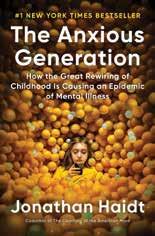



My friend and I flirted our way into the fourth row to see Dave Matthews Band at Red Rocks in Colorado back in the ‘90s.

last year in Seattle was pretty epic.

Blink 182 in high school. A group of us camped out at the radio station to try and see them before the concert. Then, we headed to the concert where we were in the front row. So awesome!
The Watershed Musical Festival at The Gorge. The first year (2012) was the best. No crowds!

Paul McCartney and Wings in the Kingdome in the late ‘70s.
EDITORIAL
MANAGING EDITOR
Allison Sutcliffe
SENIOR EDITOR Kristin Leong
ASSOCIATE EDITOR Kari Hanson
FAMILY FUN EDITOR
Meredith Charaba
CALENDAR EDITOR
Julie Dodobara
COPY EDITOR
Sunny Parsons
CONTRIBUTORS
Gemma Alexander, Dr. Natasha Flake, Laura Kastner, Ph.D., Lisette Wolter-McKinley
DIGITAL MARKETING
MARKETING DIRECTOR
Lindsey Carter
EMAIL MARKETING SPECIALIST
Devon Hammer
SOCIAL MEDIA SPECIALIST
Brooke Collins
ADVERTISING SALES + PARTNERSHIPS
DIRECTOR OF COMMUNITY
PARTNERSHIPS +
ADVERTISING SALES
Jessica Collet
SENIOR ADVERTISING AND PARTNERSHIPS MANAGER
Ida Wicklund
ADVERTISING SALES AND PARTNERSHIPS MANAGER
Shannon Johnson
EVENTS + COMMUNITY
PARTNERSHIPS SPECIALIST
Brenna McCown
CLIENT SERVICES + DESIGN COORDINATOR
Angela Goodwin
ADVERTISING CLIENT
SERVICES SPECIALIST
Mallory Dehbod
DIGITAL ADVERTISING + MARKETING SPECIALIST
Taryn Weiner
PRODUCTION COORDINATOR
Tamryn Nell
ART + PRODUCTION
SENIOR DESIGNER Amy Chinn
ADMINISTRATION
BUSINESS MANAGER
Carolyn Brendel
OPERATIONS ASSISTANT
Erika Widjaja

Seeing De La Soul at Wellesley College in the early ‘00s as an undergrad. The guys in the band were shocked (and also delighted) at how many of us were rapping along with them.

I saw Tim McGraw and Kenny Chesney together at The Gorge in their heydays. It was my first Gorge concert with my girlfriends, and my mom took us camping. So much fun!


In South Africa, it’s rare for international artists to stop there on tour. But in 2013 Justin Bieber did, and my cousins surprised me with tickets. Thirteen-year-old me was very excited, and it’s the most memorable concert I’ve ever been to.
Bruce Springsteen, Springsteen On Broadway — Alayne Sulkin, publisher

PARENTMAP EDITORIAL ADVISORY BOARD
Benjamin Danielson, M.D. CLINICAL PROFESSOR, UW SCHOOL OF MEDICINE PRACTICING PHYSICIAN, UW MEDICINE
Joan Duffell RETIRED EXECUTIVE DIRECTOR, COMMITTEE FOR CHILDREN
John Gottman, Ph.D. THE GOTTMAN INSTITUTE PROFESSOR EMERITUS, UNIVERSITY OF WASHINGTON
Laura Kastner, Ph.D. PSYCHIATRY + BEHAVIORAL SCIENCES, UNIVERSITY OF WASHINGTON
Bea Kelleigh VICE PRESIDENT, DOVETAILING, LLC
Yaffa Maritz, M.A. FOUNDER, LISTENING MOTHERS + COMMUNITY OF MINDFUL PARENTING
Daniel J. Siegel, M.D. EXECUTIVE DIRECTOR, MINDSIGHT INSTITUTE
CONTACT
INFORMATION
Advertising information 206-709-9026 or advertising@parentmap.com Fax 206-709-9031
Calendar submissions calendar@parentmap.com
Editorial submissions
editor@parentmap.com
Distribution distribution@parentmap.com
Administration 206-709-9026, parentmap.com
Subscriptions subscriptions@parentmap.com
Subscription rate 1 year: $12
ParentMap is published monthly.
PMB #190, 7683 S.E. 27th St., Mercer Island, WA 98040
All rights reserved; reproduction in whole or part without permission is prohibited. © ParentMap 2024 • printed in Oregon







A favorite fruit’s shocking truth August is blackberry season in the Pacific Northwest. For some, that means harvesting a sweet handful from a patio pot to make a pie. For others, the fruit’s thriving time means donning a suit of armor and tackling an overgrown hill with a sword. Either way, your trivia team will appreciate the knowledge that blackberries are actually not berries at all. Instead, each fruit is an aggregation of dozens of tiny fruits called drupelets.

Let’s hear it for moms and grandmas
A new Cornell University study suggests that the close bond between mothers and their children might explain why humans live longer lives compared to other mammals. The research found that species with offspring that rely on maternal care for survival (such as elephants) tend to evolve to have longer lifespans. The research builds on the “mother and grandmother hypothesis,” which posits that human children are more likely to survive if their mothers and grandmothers are present in their lives.
Advice from baby mice
Researchers at the University of Zurich found that for newborn mice, the development of their senses of smell and touch are closely linked and occur primarily during their first week of life. Sensory interaction is vital for mice brain development, with early exposure to odors enhancing touch sensitivity. And while this study didn’t examine human newborns, it can’t hurt to take your baby outside this month and tickle their curious little face with a fuzzy and fragrant tomato plant leaf.


Mark your calendars, nerds
The City of Seattle’s Neighborhood Matching Fund is investing $50,000 in the Langston Hughes Performing Arts Institute to support the launch of the first annual Seattle Black Nerd Fest later this fall on September 21–22. This free two-day event will celebrate Black and Brown nerd culture with workshops, film screenings, panels and more. Starting your cosplay planning early is highly recommended.
An army of Augusts are on the way
If your baby’s name is August, get ready — he might have a lot of similarly monikered buddies on his T-ball team in a few years. According to Nameberry, August is the site’s sixth most popular baby name for boys so far in 2024. Looking only within the U.S., the summer-themed baby name comes in at 106 on the popularity scale, a sharp improvement from its low point in 1983 when it was ranked 926.

The youth are amped
By Kristin Leong

Go ahead, keep nagging those tweens
A University of Illinois study discovered that while kids may act like they’re ignoring parents’ sage advice on school problems, they’re secretly benefiting from it. The researchers looked at conversations between fifth grade students and their moms about academic problems, examining the parents’ advice and the students’ responses. Following the tweens’ transitions to middle school the following year, they found that kids who rejected or responded ambiguously to their mom’s advice actually demonstrated more adaptive coping skills in middle school than those who accepted their parents’ wise words the year before. Turns out, the eye-rolls might just be kids’ way of saying, “Thanks, Mom, I’ll use this later.”
A recent national poll by the University of Michigan showed that a quarter of parents report that caffeine is part of their teen’s daily routine. Soda was the main source of the psychostimulant for students, followed by coffee and tea, with energy drinks coming in last.



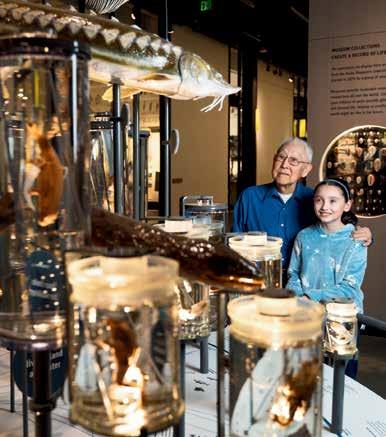


ParentMap is proud to highlight local area nonprofits making a difference in our community as part of our Giving Together campaign.
There are nearly 10,000 children in foster care in Washington and each face unique challenges including trauma, loss and changes in homes and schools. Emotional upheaval cause youth in foster care to endure social, emotional and academic challenges on top of the challenges of just being a kid. Treehouse is the one of the only nonprofits dedicated to meeting the specific educational needs of youth in foster care, in addition to other essential support.
Learn more at Treehouseforkids.org.







suppliesandsupporttheyneed.




















By Gemma Alexander
We try to keep it a secret from our kids, but we probably dread homework more than they do. There is so much to take care of in the evening, from dinner to bathtime to prepping for the next day. The last thing we need is an hour of cajoling tired, tearful children through math worksheets. But we grit our teeth and do it because it’s important for their education. Or is it?
Several Seattle-area elementary schools made news in 2016 when they chose to eliminate homework. While many families sighed with relief, others worried that it was another sign of declining standards. The move was part of a national trend, the latest pendulum swing in a controversy that has been raging for more than 100 years. Despite strong opinions on both sides, when it comes to the value of homework, few things are certain.
Those Seattle schools were at the vanguard of a homework elimination trend in 2016. Since the pandemic, schools around the country, including several districts in major cities in California (Sacramento, Los Angeles and San Diego) and Clark County, Nevada, have taken steps to limit or eliminate elementary school homework. They argue that homework exacerbates the achievement gap. A study conducted in the Netherlands surprisingly found that homework benefited students from higher-income backgrounds more than it benefited students from lower-income backgrounds. Higher-income families are more likely to have resources like a quiet space to study, books and internet access, as well as adults (full-time parents or even tutors) who have time to assist the child with confusing assignments. In the U.S., a 2021 survey by the Pew Research Center found that 25 percent of lower-

income children (compared to only 2 percent of upper-income children) were sometimes unable to complete their schoolwork for lack of computer access at home.
Many parents and educators also point out that homework comes at a potentially high cost in terms of missed opportunities, even for well-resourced families. Children already have a deficit of physical activity after sitting still at a desk for hours every day. In light of the known serious health effects of a sedentary lifestyle, there is a strong argument to be made that children should be playing outside as much as possible after school. Homework cuts into family time, too, eliminating opportunities for family meals and activities such as playing board games, having conversations, doing household chores, reading for pleasure and even going to bed on time. All of these activities have proven beneficial to kids’ mental and physical health, social skills development, executive function development and even academic achievement.
On the other side of the equation, many teachers and parents feel that restricting homework is a “lowest common denominator” approach. They argue that it sends a message that schools’ expectations for student learning are so low, they have given up on expecting kids to do any work. The concern is that even if eliminating homework minimizes the academic performance gap, it does so by universally lowering the bar.
There is also the argument that doing homework early in their education helps students establish good habits, such as organizing and planning ahead, as well as learning effective studying methods that will pay off when they get older.
The science of homework
Ideally, these theoretical arguments could be laid to rest by looking at the research. But the research is surprisingly ambiguous, in part because it is challenging to establish consistent definitions and reliable measurements. Should homework be measured by time spent or number of problems completed? How do you account for homework a child finishes by themselves compared to homework completed with adult assistance? And in all cases, how reliable is the data reported by busy parents? Add to that the fact that academic outcomes are nearly impossible to measure (see also: the standardized testing debate).
Both in research and at home, it’s easy to confuse rigor with workload, but a time-consuming homework assignment may not teach a child very much at all — just think of all those school projects involving papier-mâché. For years, most of the research on homework focused on figuring out how much time it should take. That old research confirmed that too much homework is a major source of stress at all
When teachers and adults promote autonomy and independence for students doing their homework, rather than having them focus on completion and correct answers, the students tend to benefit more.
grade levels. Among those who approve of elementary school homework, a widely accepted guideline is 10 minutes per grade level, so it would be 20 minutes for a second-grader and one hour for a sixth-grader. It’s a rule of thumb designed to minimize frustration. In elementary school, there is no correlation between academic performance and the amount of time spent on homework.



continued from page 9 FEATURE
According to the 2006 meta-analysis by researchers at Duke University, different studies have found that homework can improve study habits, self-discipline and independent problem-solving, but it can also cause physical and emotional fatigue, fuel negative attitudes about learning and limit leisure time for children.
Newer research has begun to look at other aspects of homework besides workload to determine what leads to such disparate outcomes. One study indicated that students who found their homework interesting and who believed it was the result of their teacher’s careful consideration were not only more likely to complete a homework assignment, but also to learn from it. Other studies have shown that “extension”-type assignments, in which students extend concepts taught in class to real-world situations, correlated with higher grades than homework that simply prepared students for the next class. Both types of homework were more beneficial than the drill-and-practice type of assignment that has historically made up the bulk of homework.
Perhaps surprisingly, a more relaxed approach to homework is also associated with better outcomes. When teachers and adults promote autonomy and independence for students doing their homework, rather than having them focus on completion and correct answers, the students tend to benefit more. Based on all this newer research, homework may not get finished, but it may get better results.
What parents should do about homework
“Ultimately, I think the question shouldn’t be whether or not homework is valuable generally, but to ask what specific purpose we are hoping it will serve. To build self-management and other soft skills? Preparation for middle school? To get kids off their devices? Parent involvement? Extra drilling or practice on content that they are being taught? To provide additional support for kids who need it? To give kids opportunities to pursue their own interests more deeply through reading and research? Depending on what you’re

hoping to achieve through homework, the homework itself should look different,” says Caryn Park, a faculty member at Antioch University Seattle’s School of Education.
For elementary students who still receive homework assignments, a survey of research on the effectiveness of homework has determined some guidelines for parents to help make homework more valuable:
• Treat homework like sports: Parents should cheer from the sideline, but resist stepping onto the field.
• Engage in respectful dialogue with the school about your child’s experiences with homework.
• Work with your child to determine a healthy schedule that will enable them to complete homework while leaving adequate time for sleep, play, relaxation and family time.
If your child’s elementary school has abandoned homework and your child is struggling with a subject in school, a conversation with the teacher might result in targeted homework assignments or other at-home learning opportunities. But the problem may also be addressed by changes in the classroom. If there is not a specific academic concern, parents should prioritize physical activity and creative play over academics during their child’s free time.
Regardless of where you stand on the question of homework, experts are clear that children need to play outside, read for pleasure, engage in family life and get a good night’s sleep. As long as these needs are met, homework probably doesn’t make a lot of difference either way. ■
Seattle-based freelance writer Gemma Alexander focuses on the intersection of parenting and the arts. When she’s not writing for ParentMap, she blogs at gemmadeealexander.com and tweets @ gemmadeetweet.























































Dr. Laura Kastner responds to the best-selling book ‘The Anxious Generation’
By Laura Kastner, Ph.D.
Picture it: Your kids and most of their peers don’t get smartphones until they’re high schoolers. Phones aren’t allowed in schools. Teens can’t legally access social media until age 16. Most of their social time is spent playing outside, using their imaginations, managing risky situations, and developing healthy relationships and independence in the real world, not online. How does this sound?
This might seem like some wacky vision of a Luddite utopia, but it’s gaining traction as the latest big thing: a mission to rescue kids from the black hole of social media and a phone-focused childhood. Even the U.S. surgeon general has called on Congress to require warning labels on social media platforms, labels similar to the ones required on cigarette cartons and packs. The fact that social media use is hurting our kids is not controversial anymore — it’s a bipartisan issue we can all agree on.
I’m an enthusiast for this mission because I listen to parents for a living. Whether in my role as clinical psychologist, parent educator or speaker at parenting conferences, I hear parents share their horror stories about their kids’ excessive smartphone use. They describe kids glued to their phones, captivated by social media feeds and throwing fits over parental limits. Some of them report deep levels of suffering, such as sleep deprivation, academic slumps, mental health issues and despair about their futures.
Although this hijacking of kids’ attention has been developing for more than a decade, the current leader in the movement to resist it is Jonathan Haidt, social psychologist and
author of “The Anxious Generation: How the Great Rewiring of Childhood Is Causing an Epidemic of Mental Illness.”
The harm of too much digital media Perspectives on what Haidt calls the “phonebased childhood” are all over the news. They include opinions from parents, teachers, policymakers and tech experts. My own perspective, rooted in child development, focuses on what is lost when 5–10 hours a day are spent looking at a screen.
It was about 2015 when I saw my first teenager in therapy for excessive digital media use. Johnny (not his real name), a high school junior, had been a soccer star and scholar. Despite his parents’ attempts to limit his “digital daze,” Johnny became obsessed with online Texas Hold’em. He made $20,000 playing online poker in three months and ultimately dropped out of school so he could gamble full-time. Despite losing his family, girlfriend and college opportunities, Johnny reveled in “making bank.”
Although atypical, Johnny’s experience illustrates the rapid derailment of a childhood brought on by the dopamine high induced by digital media overuse.
Common Sense Media documented that kids between the ages of 8 and 12 spend an average of 5.5 hours per day on screens, while teens (ages 13–18) connect around 8.5 hours daily. A Pew survey found that nearly 100 percent of American teens have a smartphone, with roughly half reporting they’re online “constantly.”

Research has linked social media use to increased depression, anxiety, disordered eating and suicide rates. Haidt’s book provides compelling evidence for the causal link between social media use and the decline in teen mental health, citing numerous correlational, longitudinal and experimental studies.
The great kidnapping — right under our noses Many parents had no idea they were participating in the biggest technological heist and experiment on children in history. With the advent of the smartphone, children merely had to click a box claiming they were 13, and millions of companies could steal their personal data and bombard them with notifications about exciting, alluring, and dangerous sites and products.
In this new social landscape, kids are not communicating directly with people they know and to whom they are accountable for their decorum. As with most social media use, kids interact with large groups of strangers and lack any control over where their personal information and posted images will go.
As a clinician, I notice that one of the worst parts of excessive social media use is the cost of lost opportunities: The time lost to vegging out with screens is time kids aren’t engaging in healthy activities. Children used to play independently and participate in sports, music, hobbies and art; hold parttime jobs; and volunteer after school.
However, there is another component to kids’ emotionally outsize responses to parental limits on phone use. Lacking some of the social and emotional skills needed to join
RAISING






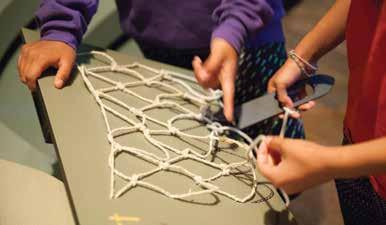
continued from page 13
groups and meet obligations, kids are anxious and avoid challenges. The contradiction of wanting the dopamine reward that social media gives and avoiding the distress of facing challenges generates powerful resistance to real-world involvement.
Parents recount stories of full-out meltdowns after digital shutdowns. Once the dopamine-releasing reward systems in their brains are established, kids crave it and will fight for the fix. They also often fight to avoid new and daunting endeavors typically encountered in daily life.
The importance of engaging with the real world From a developmental perspective, children and teens need embodied, play-based childhoods to optimize social, emotional and academic learning. Over millions of years, humans evolved to distinguish between things that are good or bad for us through real-world interactions. For example, eating toxic foods made us sick so we learned to avoid them. The accumulation of these learned experiences, referred to as the mind-body connection, allow us to navigate the world safely, deftly and successfully. Replacing embodied experiences with the digital versions offered on social media is not an equal exchange.
Brains are wired based on what we learn through millions of tiny interactions. What we think, do and practice determine which neural circuits will become established and which ones will weaken. Neuroscientists often explain this
continued on page 16
If the Shoe Fits
I’m three kids deep and still have to Google questions about getting Sharpie marker off of hardwood floors. But some questions aren’t as easy to Google, like finding the right fit for kids’ shoes. So I asked the experts at See Kai Run to weigh in.
Buying shoes with room to grow is fine and allows enough space in the front area for toes to wiggle, flex and build strength freely. To determine how much extra room there is, remove the shoe’s insole and have your child stand on it. About a half inch (an index finger’s width) of space is the maximum amount recommended.
To find the complete answer to this and seven other common questions about kids’ shoes, scan the QR code.































































continued from page 14 phenomenon with the simple statement, “Neurons that fire together, wire together,” a concept that originated with Canadian psychologist Donald Hebb.




















During this rapid, sensitive and unique period of adolescent brain development, this wiring process is crucial. By age 13, the teen brain undergoes remodeling and becomes more sensitive to rewards and social influences. Kids take risks and seek challenges that prepare them to leave the nest. They need the 5.5 hours per day currently usurped by social media use to learn these essential life skills.
Parents’ brains have been shaped by digital media and constant smartphone access as well. Notifications feed us alerts about disasters all over the world, contributing to a sense that dangers and threats are everywhere all the time. Parents feel a false sense of security by keeping their children inside. Over time, parents have become less aware of the relative dangers of time spent indoors, where social media platforms can diabolically snatch kids’ total attention with eye candy that ultimately makes them sick.
The nature of ‘slow creep’
As with desensitized attitudes toward climate change and gun violence, the phone-based childhood has developed through a slow creep of bad policies and a dearth of useful information. We have become habituated to the loss of family time sucked away by media and wonder why we feel more loneliness and alienation.
First, we lost neighborly connection, civic membership and exposure to nature when we stayed home to watch TV. With the saturation of internet access, we stayed home more frequently, and “connection” was gained through electronic means, not by walking in the neighborhood or attending a place of worship. Tech life advanced, and a community based in the real world retreated.
To a significant degree, health-compromising risktaking among children and teens has always been moderated by parents, laws and policy. We’ve known that kids need guardrails to protect them from excessive risk-taking related to cars, substance use and unsafe sexual behaviors. We just weren’t aware of the insidious dangers that creep into their lives through smartphones.






When discussing the dangers of social media, a common counterargument is that technology is here to stay. However, as with cars, social media needs safety features and regulations. Teen morbidity and mortality rates have improved with raising the legal age for driving with peers, installing air bags and establishing designated drivers as a social norm. Because kids have had unrestricted access to smartphones, we are now playing catch-up with a harmful product that has lacked adequate safety measures.
Pushing the tipping point of the social media epidemic
As with most epidemics and fads, tipping points happen, and trends recede. The excessive use of smartphones among children and early adolescents can become a virus in remission if we adopt Haidt’s proposed agenda.
Haidt wants to institute four new norms: no smartphones before high school; no social media before 16; phone-free schools; and more independence, free play and responsibility in the real world.
Haidt’s policy ideas take pressure off parents to do all the hard work of fighting the viral load of phone use. Some families don’t have problems with smartphones because they take a firm stance of banning them early on, or because their children are temperamentally self-disciplined. But many
more families are stressed out, cave in to kids’ pleas and fall into habits of excessive use. It’s time for parents to get some help from schools, policymakers and each other.
In many states, schools have banned cell phone use, and many others plan to implement similar policies next year. Teachers know that learning can’t take place when students are constantly engaged in phone use. Flip phones and smartwatch devices can allow parental contact without supplying a constant stream of data.
Ireland and Germany have set the digital age of consent at 16, and France, at 15. Age verification is possible with technical adjustments. Although not foolproof, policy changes will improve teen health, similar to improvements made when the sale of alcohol and nicotine to teens became regulated.
Why collective action and policy change? Kids fly into cyclonic fits when parents try to cut the tether to the phone, because they fear missing out and losing contact with their friends. But if their friends aren’t in the cyber supermall, there’s nothing to miss. A critical part of changing parenting practices and laws simultaneously is moving in unison on this mission.
Are you reading this on a screen? I’m glad, but now it’s time to go outside and play. Here’s hoping your kids are outside, too, playing independently. ■
Laura Kastner, Ph.D., is co-author of a number of parenting books, including the acclaimed “Getting to Calm: Cool-Headed Strategies for Parenting Tweens and Teens.” She is a clinical professor of psychiatry and behavioral sciences at the University of Washington.
















































Parents are expected to wear so many hats. We need to be teachers, therapists, doctors, accountants — and the list goes on. Although I rarely feel qualified to wear any of them, there’s one hat I definitely shouldn’t wear: that of a dentist. Beyond brushing and flossing, I’m way out of my depth. That’s why I welcomed the opportunity to ask Dr. Natasha Flake how to handle a knocked-out tooth. Here’s what she suggested:
— Allison Sutcliffe
By Dr. Natasha M. Flake
1/ Locate the tooth immediately; don’t leave it at the site of the accident. Pick it up by the crown (the chewing surface), not the root, and handle it carefully. To minimize injury to the root, touch only the crown. If the tooth is dirty, gently rinse it with water only.
2/ Insert the tooth back into its socket immediately, if possible. The sooner the tooth is back in its socket, the greater the likelihood it will survive. To insert the tooth, gently push the tooth into the socket with your fingers. Hold the tooth in place with your fingers or have the injured person gently bite down on it. A gauze can be used to bite on as well.
3/ Keep the tooth moist at all times. The tooth must not be left outside the mouth to dry. If it cannot be placed back in the socket, place the tooth in an emergency tooth preservation kit or milk. If none of these options are practical, use water.
4/ Seek professional help immediately. Dial 911 if there are other injuries to tend to. You may wish to see an endodontist or the nearest available dentist within 30 minutes or as quickly as possible. Endodontists often are available on short notice, and they are specialists who have completed an additional two or more years of training beyond dental school. Their advanced training makes them ideally suited to save a knocked-out tooth in many cases. ■
Dr. Natasha M. Flake is president of the American Association of Endodontists and a professor in the Department of Endodontics at the University of Washington School of Dentistry, where she has been the director of Predoctoral Endodontics since 2009.


AtForestRidge,ourexpertfacultydeliveran engagingandrigorouscurriculumthatisa carefulbalanceoffoundationalacademics, enrichingexperientiallearningopportunities, andunique,interdisciplinarycourses.



How do words work together to allow us to communicate? Why does “Place the brown horse behind the pink pig” make sense but “Horse the brown pig place the pink behind” does not?
Grammar is our tool for clarity in communications. It is essential to writing well, and to understanding what we read.
At Evergreen Academy Montessori, grammar is child’s play—literally! A preschooler acts out verbs and builds scenes with The Farm. He learns to mark articles, adjectives, nouns, prepositions and conjunctions with colorful symbols, in response to prompts, such as “which word told you what type of cow?” Later in our Elementary program, he uses other materials to analyze more complex sentences, and has fun playing sentence diagramming relays.
Interesting questions, hands-on materials, and a playful spirit make grammar enjoyable to learn and understand at Evergreen Academy Montessori. Children master it and acquire yet another key tool to become capable just in school, but in life.



With horses and pigs, grammar gets real—and children love it.



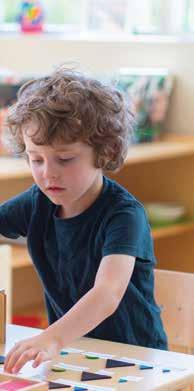





• 12.5-acre campus for creativity, investigation and discovery
• Blended indoor/outdoor learning
• Small student-to-teacher ratio
• Preschool through 5th grade in Bellevue, WA
Schedule a campus visit today! admissions@thelittleschool.org thelittleschool.org/explore






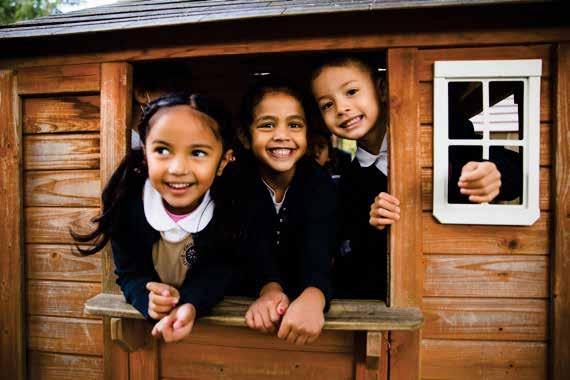
By Allison Sutcliffe
Fresh air. Sunshine. Green spaces. Parents know how important it is for kids to spend time outside. But during the school year, planning outside time can sometimes be challenging for families who are busy attending after-school activities, completing homework and trying to find time to sit down to a meal together.
While recess and gym are wonderful opportunities for kids not to be inside during the school year, the more time spent outside, the better. Research continues to prove natures’ importance in children’s mental, physical and emotional well-being. Here’s why it’s important:
• It helps kids connect with nature. In a warming climate, the idea of raising children to be environmental stewards is ever-more important. Research shows that when children feel a connection with nature, they are more likely to practice pro-environmental behaviors.
• It can improve academic outcomes. Since naturebased activities stimulate curiosity and encourage hands-on learning, it’s no wonder research continues to show improved grades and standardized test scores for students who learn outside. Beyond these hard skills, students have also shown improved attitudes toward school and less truancy as a result of outdoor education.
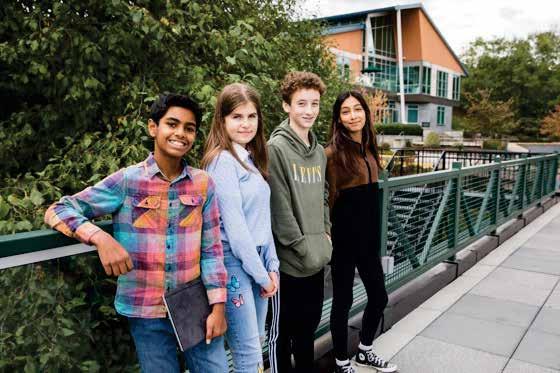
• It can positively affect kids’ health. Children who spend time outdoors are more likely to be active, and increased physical activity has a number of benefits including: helping kids maintain a healthy weight, strengthening muscles and bones and improving sleep patterns. It’s also been linked to helping kids develop a strong sense of self and empathy toward others.
• It’s more inclusive of all learners. According to Learning Through Landscapes, a UK-based charity focused on promoting outdoor education, outdoor learning “gives more scope for inclusive activities. Plus, the sensory immersion opportunities are far higher and children feel less tied to one specific mode of learning.” ■







•

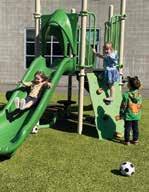
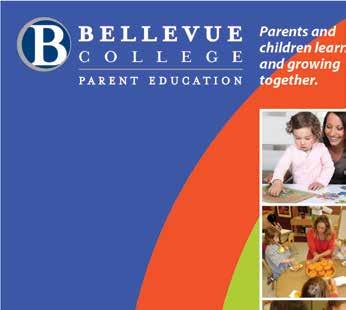





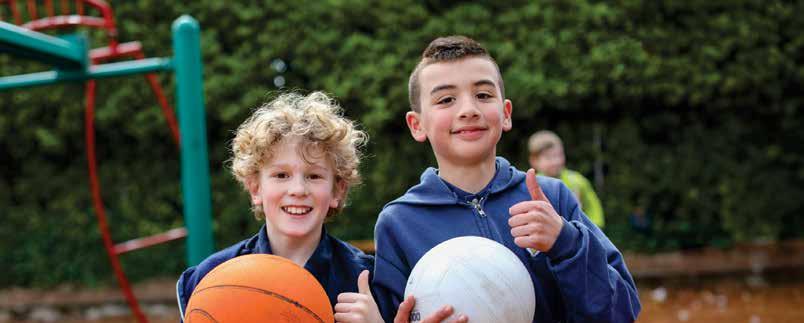










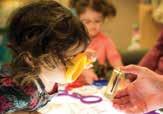

northseattlecoops.org









Enjoy these summer-only activities while you still can
By Lisette Wolter-McKinley
A Seattle summer is always worth celebrating. We don’t suffer through months of cold drizzle for nothing. Before the school-year crunch takes hold and the rain returns, seek out activities that showcase our phenomenal Northwest summer. Some of these are splurges, some are budgetfriendly, but all are focused on outdoor recreation and are best experienced when the sun is shining.
Rent a donut boat
You don’t actually eat doughnuts on a Seattle Donut Boat Co. ride. But there’s nothing saying you can’t bring some along! Donut boats are named for their shape, resembling giant floating doughnuts. These round watercraft are a decidedly different way to explore Lake Union. You don’t need a boater’s license or extensive water expertise to operate a donut boat; they’re surprisingly easy to maneuver. The boats are electric and steered with a tiller, which you can learn to use during a quick tutorial. Each can accommodate up to six people, making it the perfect self-contained summer family activity. The Seattle donut boats
have umbrellas to shade you from the hot summer sun, and there are tables in the middle that are perfect for snacks — doughnuts, of course — out on the water. Details: A one-hour cruise starts at $145.
a
You don’t need to be a tourist to cruise along one of Seattle’s most popular waterfronts, Alki Beach. At Wheel Fun Rentals, choose your cruising equipment: a surrey, a deuce coupe, a quad sport or even an electric bike. A surrey, a sort of bicycle-carriage combo involving team pedaling, promises lots of fun and laughs. If you are feeling really adventurous, pedal over to Marination

continued from page 23 ma kai for loco moco, fish and chips or a guava pop. Even on a summer day, be sure to pack a light jacket, because the breeze off the water can make it feel much cooler.
Details: A regular surrey rental costs $29 per hour and seats up to three adults, plus two very small kids. A double surrey rents for $39 per hour and seats as many as six adults, plus two very small kids.
Catch a ball game
Find your adventure today! Our online calendar is your go-to guide for family activities around Puget Sound.
ParentMap.com/calendar






Baseball is America’s pastime for several good reasons: fresh air, hot dogs, the seventh-inning stretch, and cheering for old and new favorite players. We’re lucky to have one major league and two minor league teams in our area: the Seattle Mariners, the Everett AquaSox and the Tacoma Rainiers. There’s sure to be at least one game that fits into your family’s schedule this summer. (And unlike other professional sports, a baseball game can be pretty affordable.) Gather your friends and family, because nothing is more quintessentially summer than an afternoon or evening at the ballpark. Details: Tickets start at about $10 per person.



Set sail on glittering Puget Sound right from downtown Seattle’s Pier 56. Board a U.S. Coast Guard–certified performance racing yacht with Sailing Seattle, and feel the wind in your hair and the sunshine on your face. Enjoy an evening on the water as you watch the sun dip behind the Olympic Mountains. Be certain to bring a jacket, a blanket, snacks and beverages to end your day — and celebrate summer — on a spectacular high note.
Details: The two-hour sunset sail costs $62 per adult and $49 per child ages 5–12; kids 4 and younger sail free. Daytime sails of 90 minutes or two hours are also available.
Rent paddleboards or kayaks
If the idea of getting out on the water under human power sounds appealing, look no farther than the REI Co-op Boathouse at Enatai Beach Park. There you can
try the ultimate Pacific Northwest family activity when you rent stand-up paddleboards (SUPs), canoes or kayaks. Paddle to the nearby wetlands for calm water and enjoy an afternoon of bird-watching and lily pad dodging. A canoe is your best bet if you have small kids.
Details: Kayak, SUP and canoe rentals range from $29 to $49 for the first hour, $10 for each additional hour. The boathouse is currently open Friday–Sunday. There’s another REI boathouse offering rentals at Meydenbauer Bay Park.
Enjoy a kayak dinner cruise
Forget dinner and a movie and say hello to a Seattle-style family date night and one of the coolest family activities in Seattle: dinner and kayaking with Agua Verde Paddle Club. Work up an appetite exploring the busy waterway of Portage Bay before devouring a plate of cauliflower tacos and a heaping pile of chips and salsa at the on-site cafe. Agua Verde is your one stop for food, fun and a memorable outing on the water. Details: Single and double kayaks rent for $10–$20 per hour. The paddle club is open daily except Tuesdays and Wednesdays for walk-up rentals. Agua Verde also offers guided tours.
Explore the beach at low tide
This glorious summer activity for families is budget-friendly, as in free. Stroll along the beach during low tide, when beach naturalists from the Seattle Aquarium will help identify what you find and share everything they know about the abundant marine life

living along our coastline. They’ll also let you know how to keep that marine life safe. Find beach naturalists stationed during lowtide days at the following parks: Richmond Beach Park, Carkeek Park, Golden Gardens Park, Olympic Sculpture Park Pocket Beach, Charles Richey Sr. Viewpoint, Lincoln Park, Seahurst Park, Des Moines Beach Park, Saltwater State Park, Redondo Beach and Dash Point State Park.
Details: Various dates and times in early August. A Discover Pass is required to park at Saltwater State Park and Dash Point State Park.
Try new foods at a local farmers market Consuming locally grown, in-season produce is a wonderful way to “eat the rainbow.” Local farmers markets are the best places to find this edible rainbow, and
letting kids pick out new and unusual foods is a great way to encourage them to try new fruits and vegetables. Find out what is ripe with a weekly visit to your local farmers market, and get to know the farmers, who will have recommendations. Find a market near you and start a weekly family tradition, or pick a market by the day of the week and get ready for an affordable, delicious and nutritious family activity in the Seattle area.
This special family outing with The Electric Boat Company is a great choice for a family adventure, birthday or reunion celebration. The standard electric boat holds up to 10 passengers, and the larger luxury boat holds as many as 12 passengers. Grab a picnic dinner and spend a couple of hours cruising around Lake Union, meandering through the rows of houseboats and watching the seaplanes take off and land. Because even our summer weather can be unpredictable at times, Electric Boat Company boats can be open-air for beautiful summer days, or heated and fully enclosed for cooler summer nights. Details: Standard boats rent for $139 per hour; luxury boats rent for $189 per hour. Driving the boat is akin to driving a golf cart and the designated “captain” in your party will receive a quick training session. ■
Lisette Wolter-McKinley is a visual storyteller and mama to three living in West Seattle. Find more of her work at lisettewoltermckinley.com.
Enrollment



From a hot spot for tabletop games to Seattle’s pop music shrine, this neighborhood rocks
By Kristin Leong
With roots dating back to pioneer days, Queen Anne Hill was originally called Eden Hill by its first settler, Thomas Mercer. Renowned for its picturesque Queen Anne–style architecture, this charming neighborhood offers stunning water views and a rich history. Its development into a bustling residential suburb was driven by its early connection to Seattle proper via public transit in the late 1880s. This led to a boom in residential construction, transforming the area into a cozy, communityfocused neighborhood.
Today, Queen Anne is a gem, especially for families with young children. The endlessly entertaining Seattle Center, with its magical International Fountain and its array of year-round family-friendly events, adds to the neighborhood’s allure. Luckily for adventurous families, you don’t have to buy property in Queen Anne (let’s be real) to take advantage of its riches. Whether you’re visiting the iconic Space Needle or giggling as colorful wings tickle you as you wander through the tropical butter-

fly house at the Pacific Science Center, there’s no shortage of activities to keep the whole family entertained.
Start your neighborhood adventure at Blue Highway Games, on Upper Queen Anne. Blue Highway specializes in screen-free fun, such as board games, puzzles and trading card games. The nearly limitless selection of no-tech games — from classic favorites, such as cribbage, to newer options, such as the Unicorn Glitterluck board game and the Seattle-made card game Morels, for fungi enthusiasts — is located at the front of the store. In the back, kids and families crowd around big tables playing one of many free games available for instore play. Blue Highway also sells drinks and snacks, and every second Sunday of the month is Family Game Day. You can earn 20% off one kids game or puzzle if your family plays a game at the shop.
After an afternoon of gaming, run around at West Queen Anne Playfield, a short walk from Blue Highway. This 6-acre park, with a play structure and two sports fields, is next to the Queen Anne Community Center, a neighborhood hub that includes a pool, gym, pottery studio, teen room and preschool room. Family-focused activities abound here! The free toddler playroom is open during the center’s business hours, and Family Gym Day is 1–5 p.m. on Saturdays.
Walk, bus or drive down to Lower Queen Anne to discover the incomparable world of the Museum of Pop Culture (MoPOP). From its Sound Lab, where budding rock stars and audio designers can experiment
with drums and soundboards, to an exhibit exploring the evolution of Barbie fashion and an immersive spacecraft that whizzes museumgoers through the history of science fiction, this can’t-miss destination will provide hours of fascinating fun for the whole family.


EATS + TREATS



Family-friendly options for food on Queen Anne are abundant. The Vietnamese cafe Queen CàPhê on Upper Queen Anne serves delicious pho, bánh mì and bubble tea. If parents are looking for a boost, I highly recommend the My Khe Beach, a specialty drink of Vietnamese coffee blended with condensed milk, coconut powder and cheese crema.

Also on Upper Queen Anne is Big Max Burger Co.

Founded by Queen Anne parents Maximillian and Jennifer Petty, this gourmet-casual spot is a hit with kids and adults. All burgers are made with houseground beef patties and come with the option to add bacon from local ranchers.
On Lower Queen Anne, McMenamins has a great kids menu featuring favorites such as its signature burger junior-sized on a Hawaiian sweet roll, and even a mini hummus plate. Also in the shadow of the Space Needle is the all-ages Dos Chamucos Taqueria. In addition to cheesy plates of nachos, tacos can be ordered one at a time for smaller eaters. And of course, there’s always Armory Food & Event Hall at Seattle Center, offering a vast selection of eats and treats from Cool Guys Fry Bar to Seattle Fudge. ■
Kristin Leong is ParentMap’s senior editor. She is the founder of The Family Court Report, a multimedia hub sharing news and human stories from the front lines of America’s Family Court system. A first-generation scholar and originally from Honolulu, she now lives in Seattle with her wife, son, and rescue pups Radley and George. She writes a newsletter for misfits and unlikely optimists called ROCK PAPER RADIO.
5th through 12th Grade


Keep the good times rolling all summer long with outdoor movies, Seafair and so many festivals
Check out many more happenings online at parentmap.com/calendar
By Julie Dodobara

We’ve really hit our summer stride by the time August rolls around, haven’t we? That’s when Seafair’s grandest event — Seafair Weekend, featuring the high-flying Blue Angels and spectacular hydro races — takes place, signaling the winding down of summer. Not to worry, there’s still so much to do before the school bell rings again. Fill summer’s last days with free concerts, outdoor shows, fairs, fests and lots more. We’re here to show you the way.
� Grab your low-back chairs, a picnic blanket, maybe even some mosquito repellent and treat your crew to a familyfriendly outdoor movie. You’ll find screenings in parks all over the Puget Sound region, with most taking place on Friday and Saturday nights, but a few on other nights, too! Best of all, most are free. Select dates, Aug. 2–31.
� The Blue Angels stunning air show is an iconic summer happening in Seattle, and it marks the culmination of a bounty of neighborhood Seafair events. Turn your eyes to the sky to spot the blazing-fast planes when you hear their unmistakable thunderous rumble
approaching, or head to Lake Washington to watch the hydro races during Seafair Weekend, Friday–Sunday, Aug. 2–4.
� Join in a summer cultural celebration that unifies people of all ethnic backgrounds. Held at Seattle’s Judkins Park, Umoja Fest honors the strength of our local African American com-
munity and contributions from across the African diaspora. The event features a parade, music, culture, yummy food and kids’ fun. Saturday–Sunday, Aug. 3–4. Free.
� Bring your kite and fly sky high at the annual Kite Festival at Chambers Creek Regional Park in Pierce County. Expect a
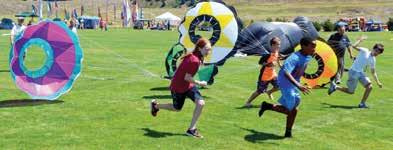
Umoja Fest
Judkins Park, Seattle
weekend full of demos, inflatables and food truck fare amid all the gravity-defying flying kites. No kite? Turn up early to snag a free one, or purchase a kite kit for $5. Saturday–Sunday, Aug. 3–4, 10 a.m.–4 p.m. The festival is free; parking is $10.
� A day trip out of town is in order, and August is the perfect time to do it. Soak up the beauty of our state’s incredible national parks on Sunday, Aug. 4, one of only six fee-free days in 2024. Visit Paradise at Mount Rainier National Park (don’t forget to book your reservation in advance!), Hurricane Ridge in Olympic National Park or, (pro tip) visit North Cascades National Park — it’s always free.
� Plop down on a blanket to enjoy “A Little Mermaid,” one of StoryBook Theater’s free outdoor shows for families. This classic tale with a twist, designed for kids ages 3–10, is being performed at parks in Duvall, Bellevue, Redmond, Monroe, Edmonds, Kirkland and Lynnwood on weekend dates throughout August. Sunday, Aug. 4, and Saturday–Sunday, Aug. 10–11, 17– 18 and 24–25.
� Pause for a moment of reflection by joining Green Lake’s moving (and beautiful) “From Hiroshima to Hope” lantern-floating ceremony. The event commemorates victims of the Hiroshima and Nagasaki atomic bombings, together with victims of war and violence everywhere. The event also includes Japanese taiko drum, choir and koto music performances. Tuesday, Aug. 6, 6–9 p.m. Free.
� Giddyup for old-fashioned county fair fun at the Pierce County Fair in Graham. It’s not the biggest fair in our area, but if you’re looking for a more manageable experience, this fair has all the animals, rides, entertainment and food in a medium-size package. Thursday–Sunday, Aug. 8–11. Admission $6–$8 with advance purchase, $8–$10 at the gate; ages 5 and younger, free. Discounts available.
� Head to the Seattle Center Armory for a rare opportunity to experience the unique culture of Tibet at Tibet Fest, part of the center’s Festál series. Celebrate with the communi-
August 8–11
Pierce County Fair Graham
ty as you sample Tibetan art, culture and culinary traditions. Saturday–Sunday, Aug. 10–11. Free.

� Lego lovers of all ages are invited to descend upon the Washington State Fairgrounds in Puyallup to marvel at lifesize Lego creations, play with more than a million display bricks and shop for hardto-find Lego sets for your collection. It all takes place at Brick Fest Live, Saturday–Sunday, Aug. 10–11. General admission, $16.99–$19.99; ages 2 and younger, free.
� It’s a summer wonderland at Maris Farms’ annual
August 16–17
Snoqualmie Days
Snoqualmie
Sunflower Days fest in Buckley. Frolic among the towering sunflower blooms, snap the perfect seasonal selfie and let the kids play all day. Included with entry: one bloom, a wagon ride, a jumping pillow and more kids’ activities. A bonus for flower fans: In addition to sunflowers, zinnias will brighten the fields again this year. Saturday–Sunday, Aug. 10–11, 17–18 and 24–25. Admission, $18–$20; ages 2 and younger, free.
� Snoqualmie, home of the historic Snoqualmie Valley Railroad, invites you and your train-loving crew to its annual summer celebration, now in its 84th year. In addition to fun with trains, Snoqualmie Days features Lego activities, live music, a pancake breakfast, the grand parade and more! Friday–Saturday, Aug. 16–17.
� Spend the day celebrating local food and sustainable living at the super fun and tasty CHOMP! festival. Families will enjoy live music (kindie entertainer Johnny Bregar will perform), tree climbing, a honk parade, zucchini races




















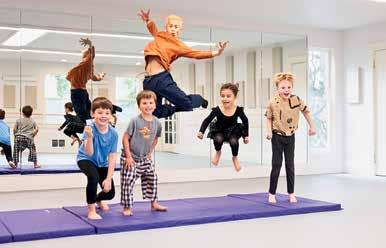

SPONSORED EVENT
Music in the Arboretum











Spend a special evening at the Arboretum! Experience music from beloved local musicians, enjoy a sweet treat, and relax amongst the trees. All ages! arboretumfoundation.org
continued from page 29
and more kid-friendly fun at Redmond’s Marymoor Park. Free admission; food for purchase. Festival takes place Saturday, Aug. 17, 10 a.m.–6 p.m.
� What could be better on a summer Saturday than a Big Day of Play? Join in the active, free fun so big that it can’t be contained in just one location. Shuttles will run between Rainier Playfields and Mount Baker Rowing and Sailing Center, allowing attendees to experience bounce houses, sports skills clinics, music, water activities and more on Saturday, Aug. 17, noon–5 p.m.
� Seattle’s getting a new and impressive waterfront park in 2025 that will span 20 acres, from the Stadium District to Belltown. Get a sneak peek of this ambitious vision for the Seattle downtown waterfront at the biggest Waterfront Block Party yet. There will be live music, dance, food trucks and crafts for the kids. Soak in summer vibes with fam and friends on Friday, Aug. 30, 1–8 p.m. ■
Julie Dodobara is ParentMap’s calendar editor.
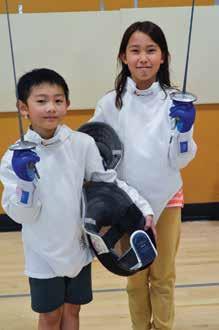
If there’s one thing Pacific Northwesterns can usually count on in late summer, it’s heat — and plenty of back-to-school plan-making. Whether your kids need to duck inside for a sun break or you want them to get back into the swing of the school year, these educational apps provide safe edutainment that will get them off to a strong start.
Khan Academy Kids If you’ve ever had to help your fifth grader with math homework, you’ve probably heard of Khan Academy. This educational app is designed for preschoolers and grade school-aged kids. Guided by one of five cute characters, kids can choose from thousands of activities, books and videos that allow them to learn at their own pace. Best of all, there are no ads and the app is free, no subscription required. Best for ages 2–7.
Cost: Free
ABC Mouse Age of Learning (the company behind ABC Mouse) launched this app back in 2010 and although it’s changed a lot over the years, it’s always been a great place for preschoolers to practice their skills. Letters, numbers, shapes and colors are all

covered in the hundreds of lessons available. But most parents will appreciate the Step-By-Step Learning Path that supports kids’ independence navigating the lessons and the apps. Best for ages 2–8.
Cost: 14.99 per month
Scratch Jr. Inspired by the MIT Media Lab-created Scratch coding language, this app invites younger children (ages 5–7) to design their own interactive stories, games and art using the simple dragand-drop platform. Kids can add in their own voices and images as they bring their designs to life on the screen. Best for ages 5–7.
Cost: Free
Duolingo People love this popular app because it gamifies learning a new language. No wonder it’s so appealing to kids! For young brains ready to absorb new information, Duolingo may not lead to fluency, but it can help them build language skills quickly and in a way that leaves them wanting more. Learning streaks, challenges and Duo the Owl help keep kids motivated. Over 35 languages to choose from and they even have a family plan so you can all learn together. Best for ages 6 and older. Cost: Free ■
The Russian School of Mathematics is an award winning, after-school math enrichment program for K-12 students. Our Fall math classes help children of all levels build a solid math foundation and develop critical-thinking and problem solving skills.
RSM is “among the top 10 schools in the world.”
-Johns Hopkins Center for Talented Youth



